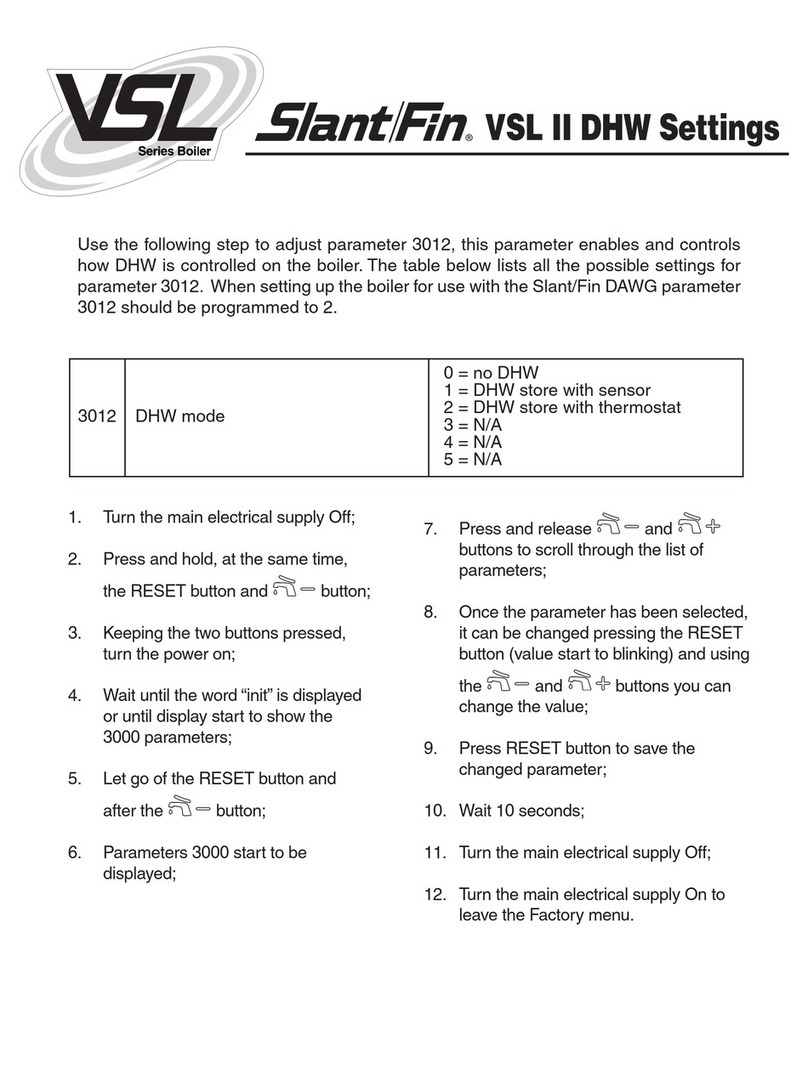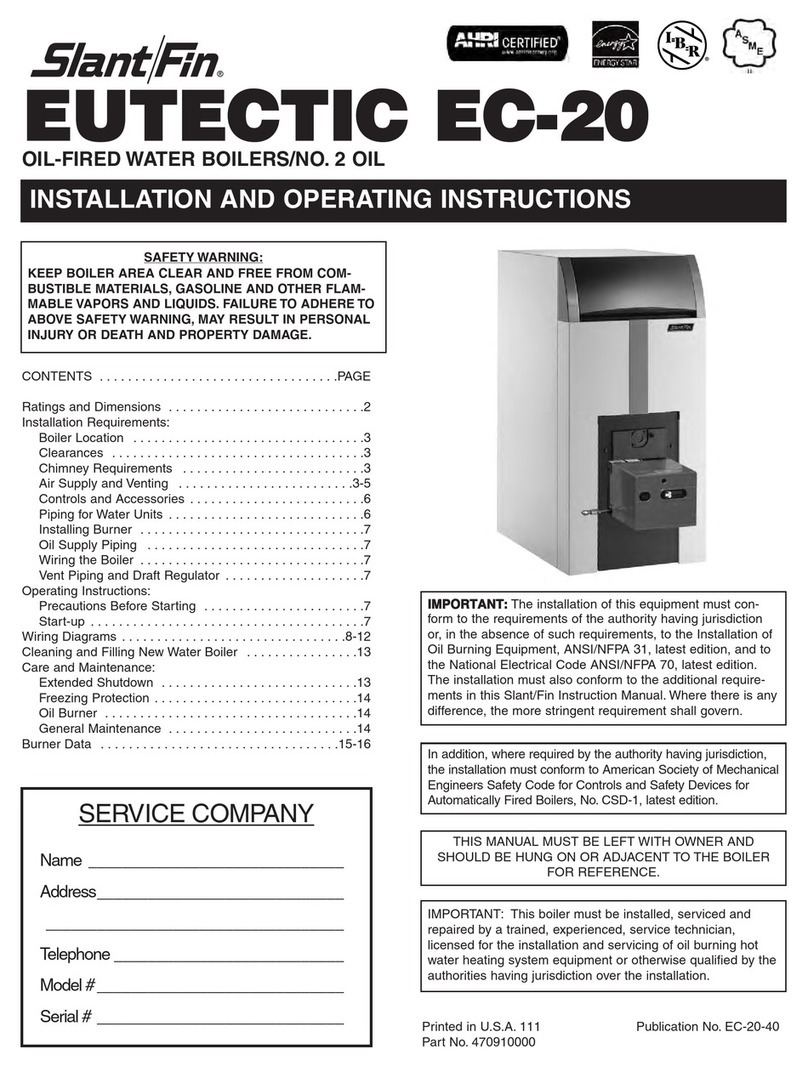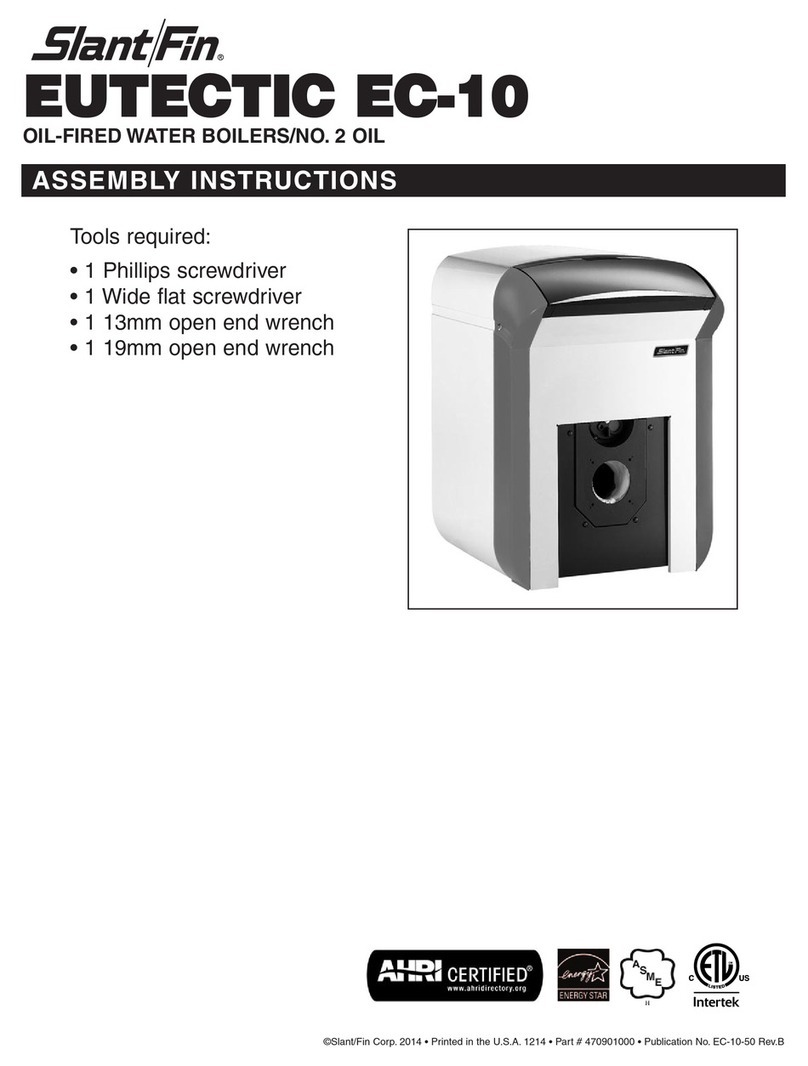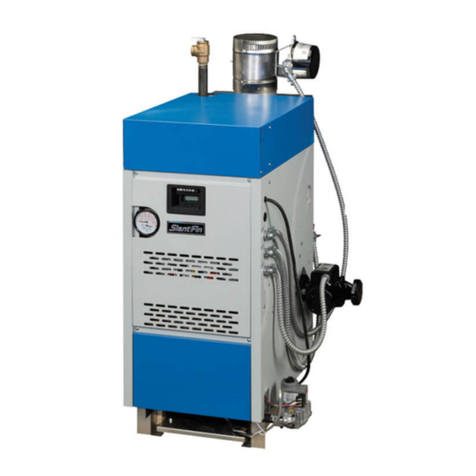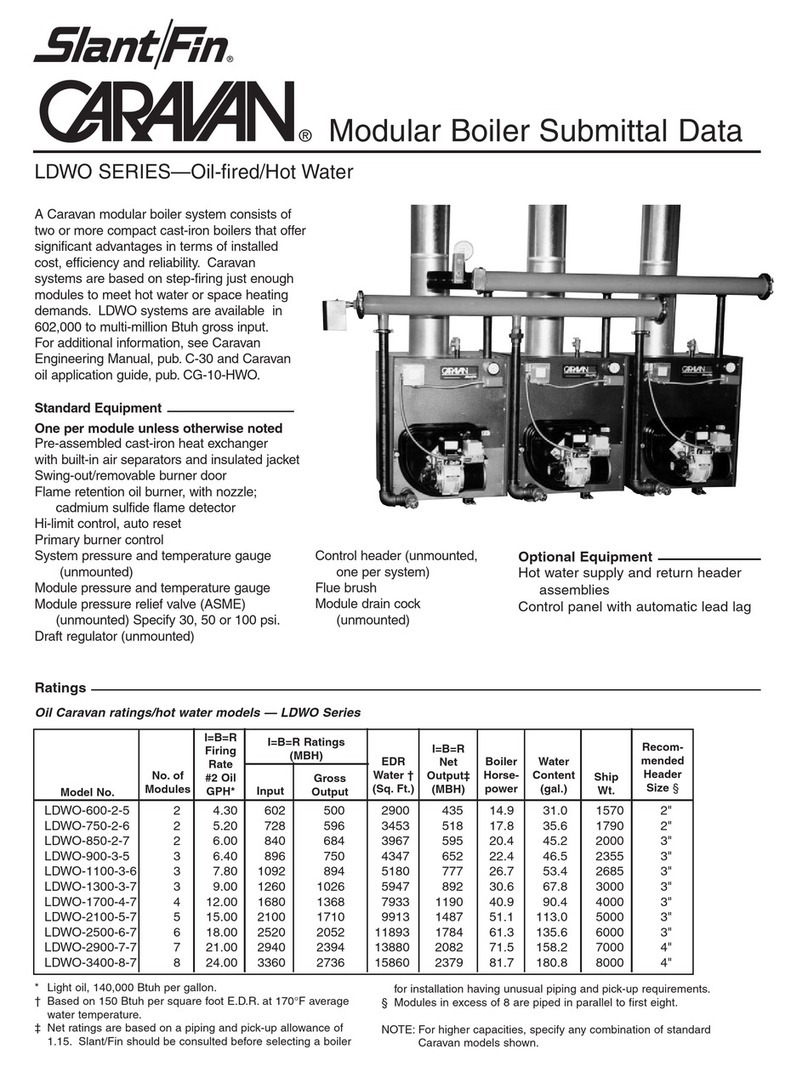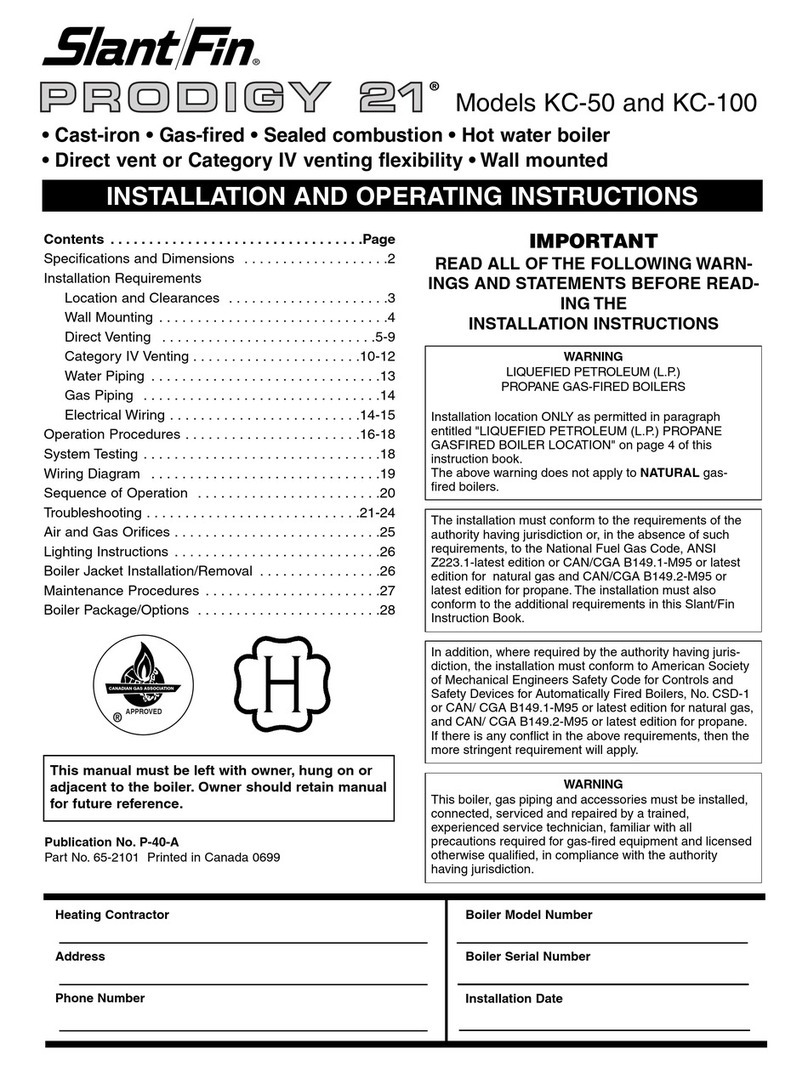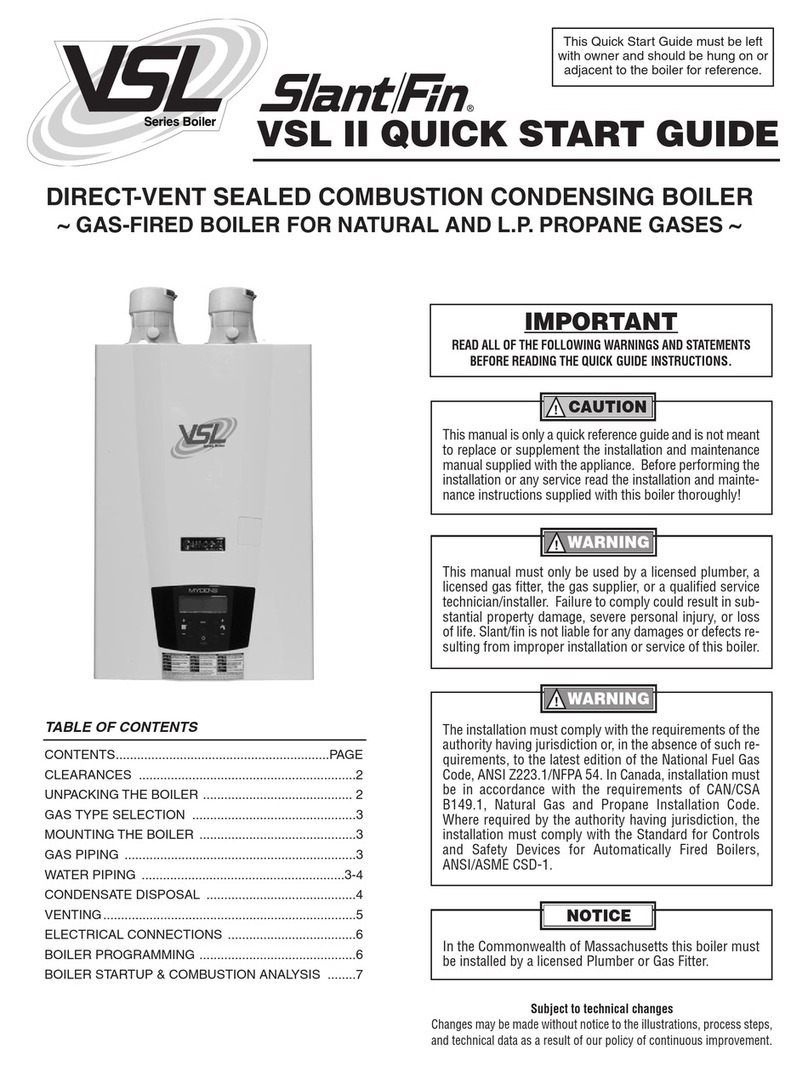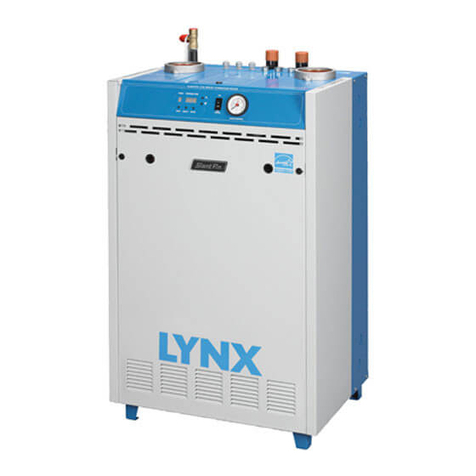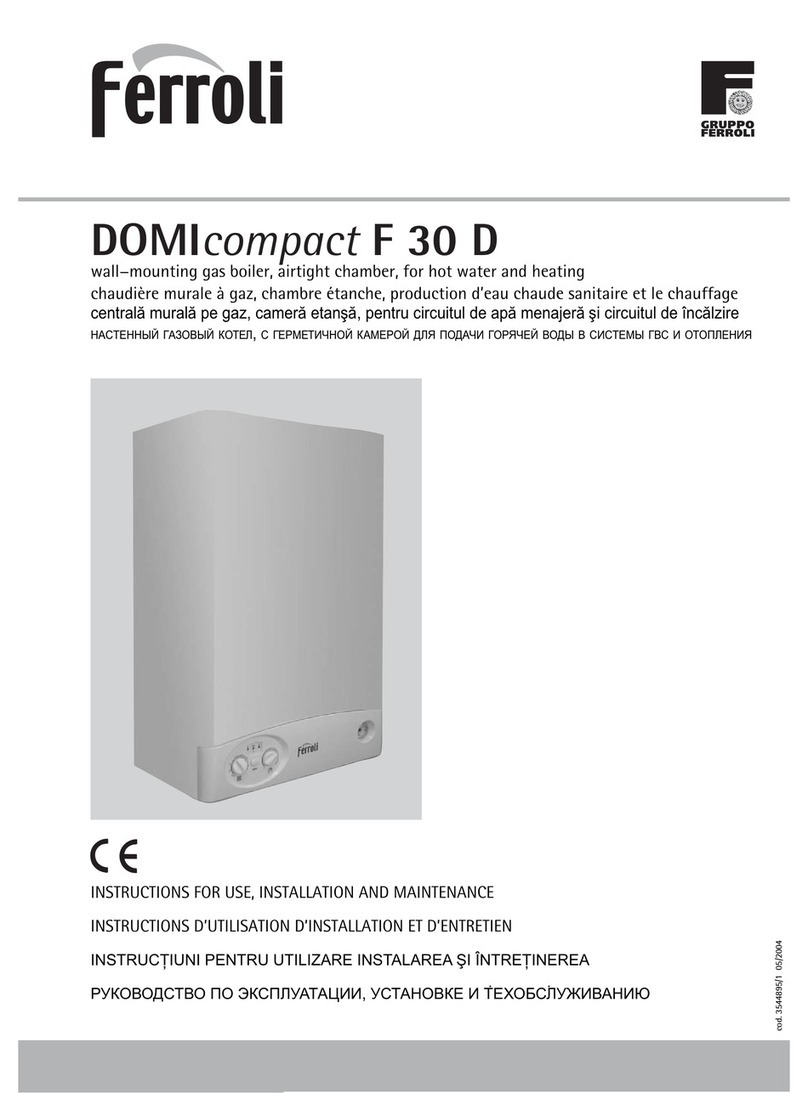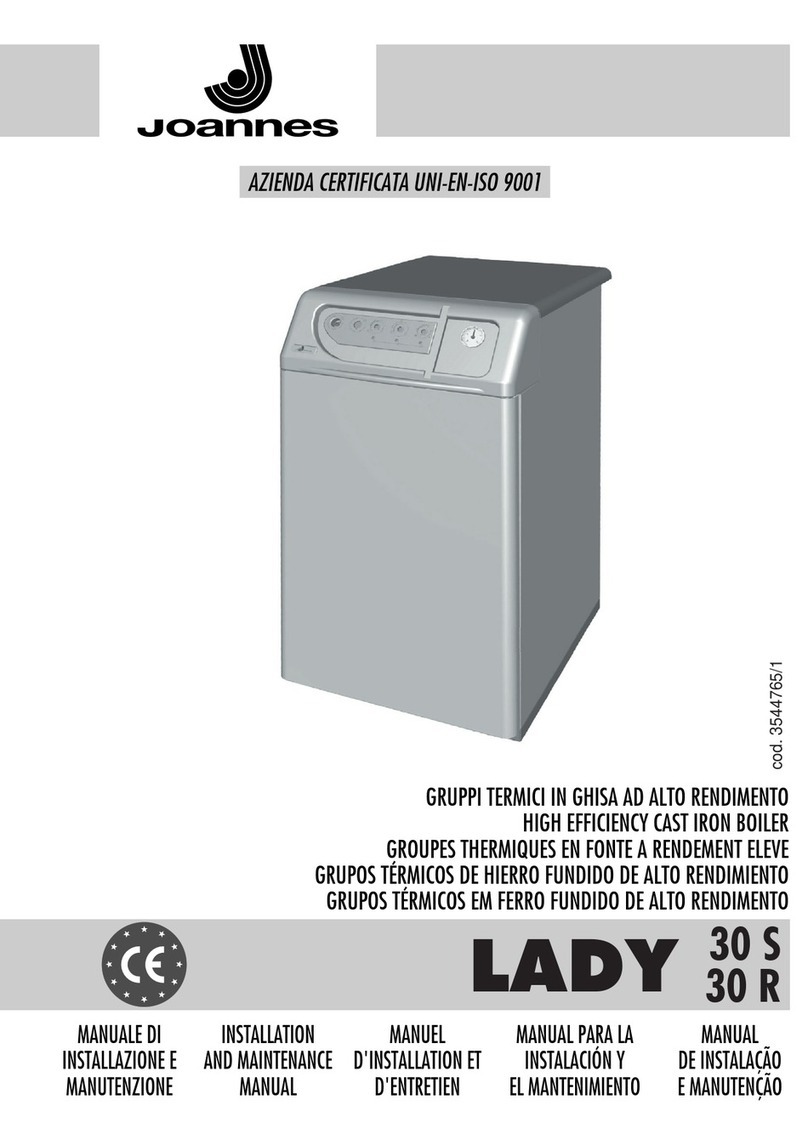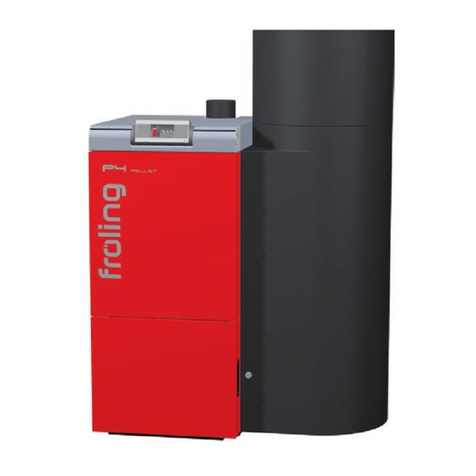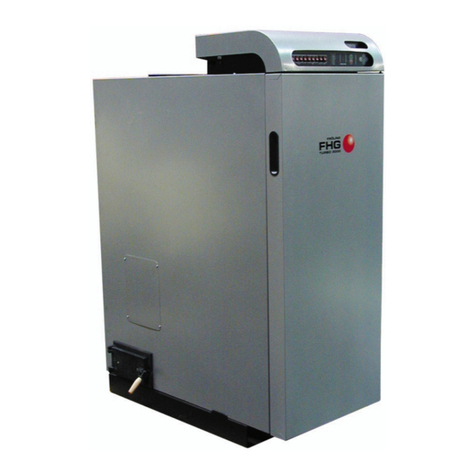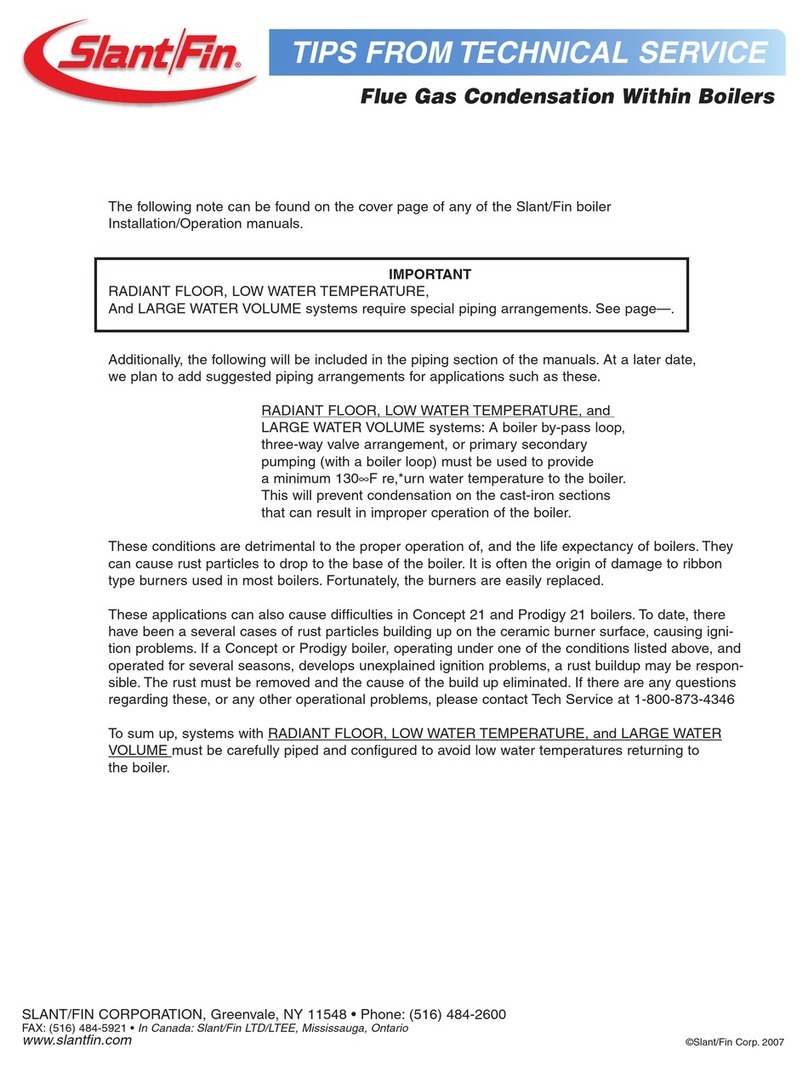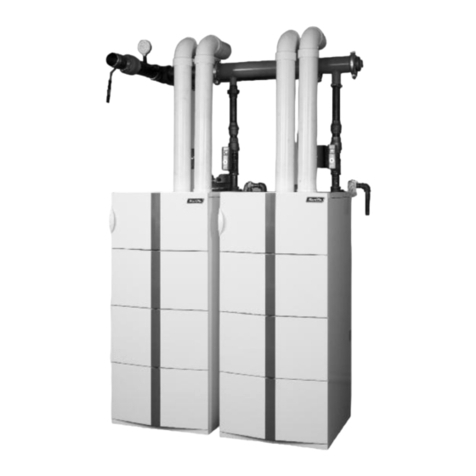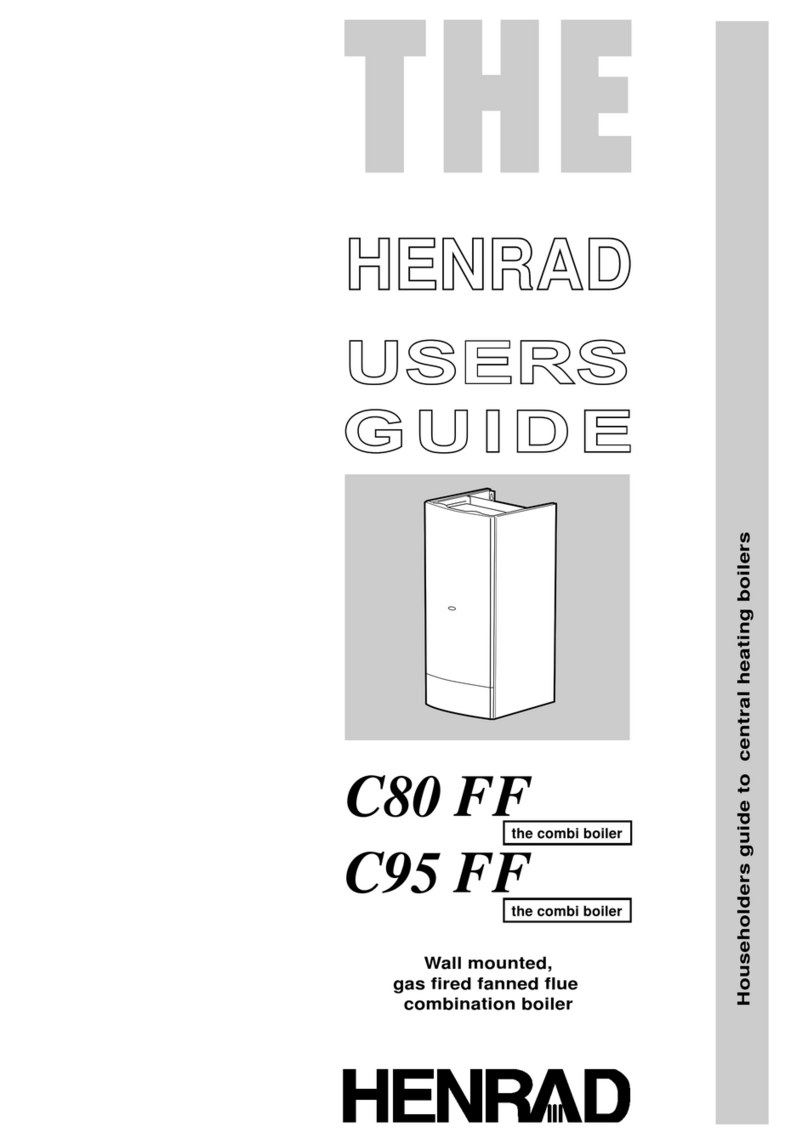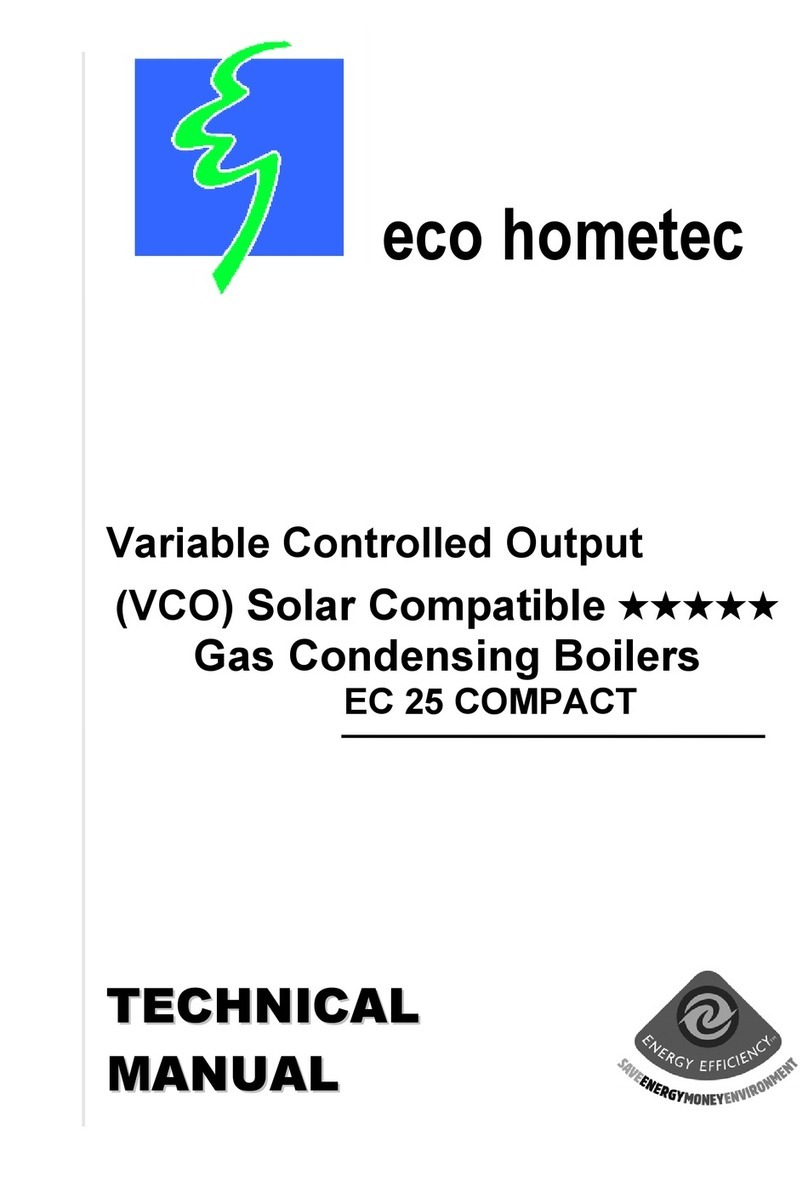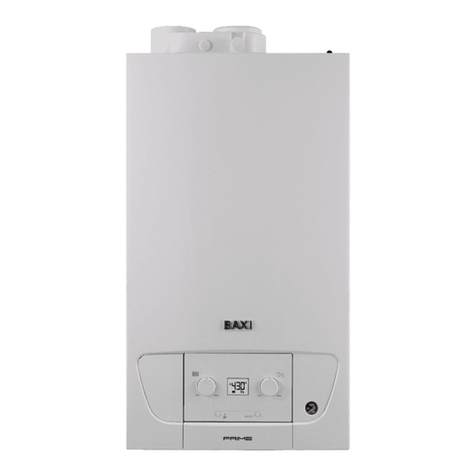
9
STEP 3: INSTALL EXPANSION TANK AND WATER PIPING
Expansion
Tank
Tank
Support
Bracket
Expansion
Tube
Tank Strap
Relief
Valve
Discharge
Supply
Water
Outlet
3/4"NPT
3/4"NPT
Return
Water Inlet
3/4"NPT
Return
Drain Valve
For Boiler
Supply
Shutoff
Valves
Pressure
Reducing
(Fill) Valve
Shutoff
Valve
Valves
Zone
Figure 14:
Expansion
Tank and
Piping
Connections
Note: Factory-
installed low
water cutoff
will shut off
boiler in the
event water
falls below the
lowest safe
water level.
Always follow good piping practices. Observe minimum
1" clearance to combustibles around all uninsulated hot
water pipes or when openings around pipes are not
protected by non-combustible materials.
Boiler must not be connected to a chiller. If the boiler
supplies hot water to heating coils in air handling units,
flow control valves or other devices must be installed to
prevent gravity circulation of boiler water in the coils
during the cooling cycle.
NOTICE: USE PIPE DOPE SPARINGLY AND SPREAD
AROUND MALE PIPE THREADS ONLY.
Expansion Tank: (Provided) To install, see Figure 14.
Piping systems with unusually large water volume may
require the connection of a larger capacity expansion
tank outside of the boiler’s enclosure.
Relief ValveDischarge Piping: Install behind supply
water pipe. Use same size or larger piping (iron or cop-
per) than valve outlet. Must terminate 6" from floor (or
local codes) with a plain (no threads) end. DO NOT
hard-pipe to drain piping. Make sure discharge is
always visible.
Cold Water Fill: Pressure reducing (fill) valve and shutoff
valve should be installed.
Supply and Return: For tapping sizes, see dimensions
on Page 3. Recommend shutoff valve in supply (and
shutoff and drain valves in return on non-zoned sys-
tem).
Radiant Floor and Standing Iron Radiant Systems:A
boiler by-pass loop (or equivalent) will be required to
avoid flue gas condensation on cast iron sections for
low temperature application. (i.e. radiant floor systems.)
Zone Piping: See Page 20 for zoning with zone valves
and domestic hot water installation.
STEP 4: FILL AND PURGE HEATING SYSTEM
•Make sure flow direction arrows on components are
facing in direction of flow.
•Place bucket under pressure relief valve discharge.
BASEBOARD AND RADIANT FLOOR SYSTEMS
•Close all shutoff valves, drain valves and air vents.
•Open supply shutoff valve and return drain valve on
first zone (or return drain valve on non-zoned system).
If zoned with zone valves, manually open zone valve.
•Attach a hose from return drain valve to a drain. Open
fill line shutoff valve. Manually operate fill valve regula-
tor. When water runs out of hose in a steady stream
(with no air bubbles), close return drain valve.
•Repeat procedure for additional zones (one at a time).
•On completion, open all return shutoff valves.
STANDING IRON RADIATION AND SYSTEMS WITH
MANUAL VENTS ATHIGH POINTS
•Close all shutoff valves, drain valves and air vents.
•Open supply and return shutoff valves. If zoned with
zone valves, manually open all zone valves.
•Open fill line shutoff valve. Manually operate fill valve
regulator. Open pressure relief valve manual operator
to fill boiler. When water runs out of discharge pipe in
steady stream (with no air bubbles), close operator.
•Starting with nearest manual air vent, open vent until
water flows out; close vent. Repeat procedure, working
your way toward farthest air vent.
WHEN FINISHED
•Place fill valve regulator and all zone valve operators
in automatic position.
•Check that temperature/pressure gage reads minimum
of 12 psi (fill pressure); exact pressure will vary with
altitude. If piping system rises more than 16 feet verti-
cally above boiler, higher fill pressures are required.
•Check for and repair any water leaks.
